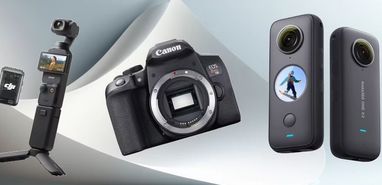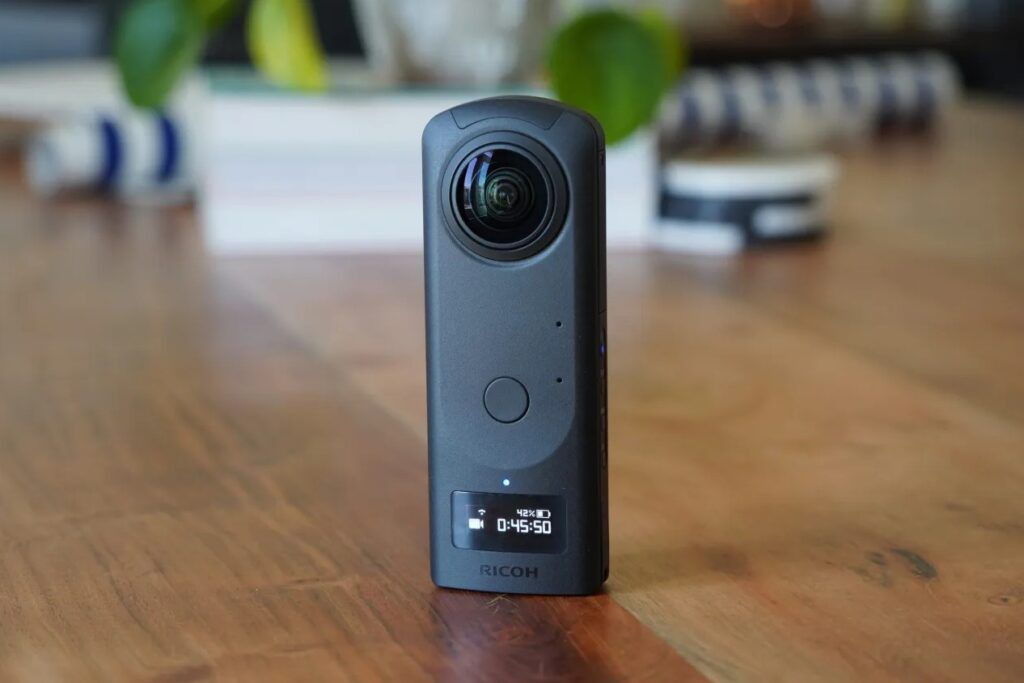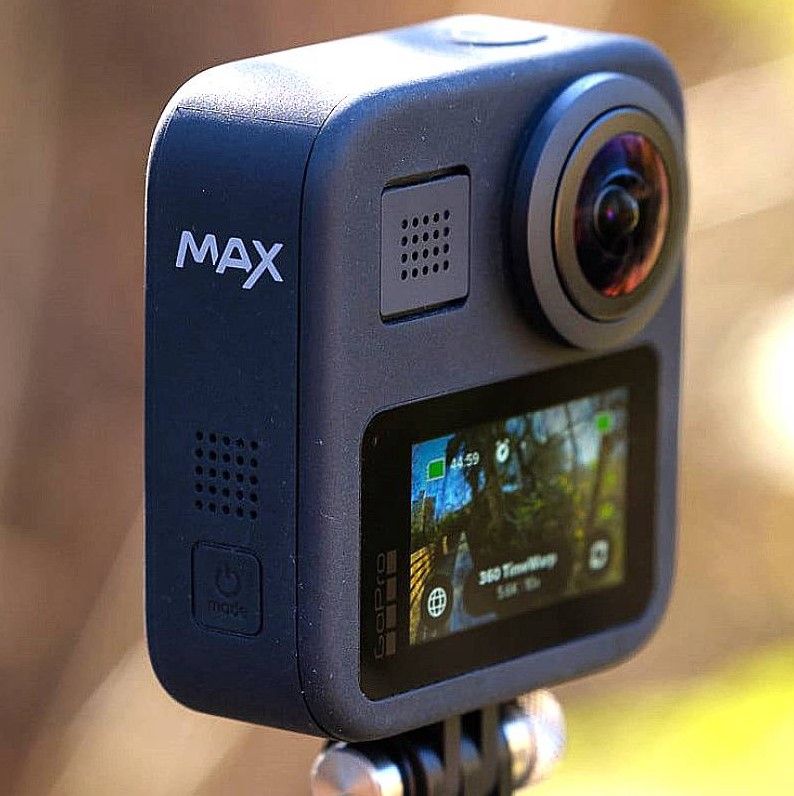
As virtual reality (VR) technology advances, capturing immersive, 360-degree content is becoming more accessible and popular for professionals and enthusiasts alike. Whether you’re developing digital twins, hosting virtual events, or offering virtual tours, the right VR camera is essential for crafting engaging and high-quality content. In 2024, the VR camera market offers some outstanding options with advanced features like 8K resolution, AI-powered tracking, and spatial audio capture. This guide will take a closer look at the top five VR cameras of 2024 and help you choose the one that suits your needs best.
1. Insta360 X4

The Insta360 X4 is one of the most sought-after VR cameras for 360-degree content creation, and for good reason. Boasting 8K resolution, this camera is perfect for those who require top-tier video quality. Whether you’re capturing fast-action scenes or immersive environments, the Insta360 X4 provides HDR capabilities for dynamic lighting conditions, ensuring that both bright and shadowed areas are well-exposed. Additionally, it supports slow-motion and time-lapse features, which add versatility to your content creation toolkit.
A key advantage of the Insta360 X4 is its compact and waterproof design, making it highly portable and durable. It’s built to withstand diverse environments, whether you’re shooting underwater scenes or intense action shots. Moreover, the camera integrates with the Insta360 software suite, offering creators robust tools for editing content directly on Mac, PC, or even mobile devices. This software is highly compatible with industry-standard tools like Adobe Premiere and Final Cut Pro.
One of the standout features of the Insta360 X4 is its AI-powered subject tracking, which intelligently follows the most important objects in the frame. This ensures that your audience is always focused on the key elements of your scene with minimal manual adjustment.
- Why it stands out: The Insta360 X4 combines portability with high-end features like 8K video capture and AI tracking.
- Ideal for: Content creators on the go, action shooters, and anyone needing a durable camera for dynamic environments.
2. Kandao QooCam 3 Ultra

The Kandao QooCam 3 Ultra is a professional-grade VR camera known for its 8K resolution and built-in stabilization. The camera excels at creating smooth, immersive experiences, making it a top choice for capturing VR content where motion is a concern. The super steady stabilization helps minimize the effects of camera shake, which is particularly useful in dynamic shooting environments where virtual reality sickness could be an issue.
What sets the QooCam 3 Ultra apart is its spatial audio capture, providing an extra layer of immersion for VR experiences. By capturing audio in 3D, it enhances the viewer’s sense of presence within the environment, making them feel like they are truly part of the scene. Additionally, the QooCam 3 Ultra supports HLG and HDR workflows, which means you can capture an impressive range of colors—more than 1 billion tones—for ultra-realistic visuals.
For those working in low-light conditions, the QooCam 3 Ultra also delivers impressive results. Its performance in indoor or dim environments is enhanced by its advanced image sensors, allowing you to capture details that would otherwise be missed in darker settings.
- Why it stands out: This camera’s ability to capture 8K video, combined with stabilization and spatial audio, makes it an excellent choice for professionals.
- Ideal for: Creators looking for the highest possible quality in video and audio, and those working in fast-moving or low-light scenarios.
Explore more about Kandao QooCam 3 Ultra
3. Ricoh Theta Z1

The Ricoh Theta Z1 is a premium VR camera that commands attention for its 23-megapixel resolution and highly advanced image stitching technology. If you’re in the market for a camera that delivers exceptional detail and clarity, the Theta Z1 is a strong contender. It has a reputation for producing seamless 360-degree photos and videos, making it a favorite among professional photographers and videographers.
The Theta Z1 offers support for RAW image formats, giving users full control over their photos in post-production. This is a significant advantage for those who need to fine-tune their images for professional use. Additionally, the camera comes equipped with a 4-channel microphone, which captures spatial audio, ensuring that the sound is as immersive as the visuals.
While the Theta Z1 is on the higher end of the price spectrum, its features justify the investment. Its cutting-edge lens technology reduces unwanted effects like ghosting and flare, resulting in crisper and cleaner images, even in challenging lighting conditions.
- Why it stands out: It combines RAW image support, 23-megapixel resolution, and high-quality audio capture in a sleek, professional package.
- Ideal for: Professional content creators and photographers looking for high-definition 360-degree photos and videos.
4. GoPro Max

For creators who want an easy-to-use and budget-friendly VR camera, the GoPro Max offers a balance of simplicity and capability. Although it doesn’t reach the lofty 8K resolution of other models, its 6K video capture is more than enough for most content creators. The Max HyperSmooth stabilization ensures that footage remains steady and smooth, even when shooting in dynamic environments.
The GoPro Max is highly versatile, functioning as both a 360-degree camera and a traditional action camera, making it a great all-rounder. Its compact size and user-friendly interface make it an ideal choice for those who are new to VR content creation, while its robust build means it can withstand the rigors of outdoor and action shooting.
One of the most useful features of the GoPro Max is its ability to shoot in different modes, including 360-degree video and standard flat video, allowing you to switch between immersive and traditional formats with ease.
- Why it stands out: Versatility and ease of use, combined with 6K video and solid stabilization.
- Ideal for: Beginner VR content creators, vloggers, and outdoor enthusiasts.
5. Vuze XR Camera

The Vuze XR Camera is a versatile device that can switch between 360-degree and 3D modes, offering two distinct types of immersive content creation. With 5.7K resolution, it may not have the highest video quality on this list, but it makes up for it with flexibility and ease of use. The 3D 180-degree mode adds depth to your content, making it ideal for creators who want to experiment with both flat and immersive video formats.
What makes the Vuze XR particularly attractive is its ability to shoot both 2D and 3D video, all in one compact device. The camera’s lightweight design ensures portability, and its intuitive interface makes switching between modes quick and straightforward. For those looking to get creative with their VR content, the Vuze XR provides the tools to do so without breaking the bank.
- Why it stands out: A seamless switch between 2D and 3D recording, offering multiple content creation options.
- Ideal for: Creators who want to produce both flat and immersive VR content, and those looking for flexibility in their setup.
Learn more about Vuze XR Camera
Choose the Best VR Camera for Your Needs
The right VR camera can take your content creation to the next level, whether you’re producing immersive experiences, virtual tours, or real-world event captures. The Insta360 X4 offers industry-leading features like 8K resolution and AI-powered tracking, while the Ricoh Theta Z1 delivers the ultimate in image quality with its 23-megapixel resolution. For those who need flexibility and ease of use, the GoPro Max and Vuze XR Camera offer versatile options for beginner and professional creators alike.
Regardless of your specific needs, any of these top 5 VR cameras will serve you well in 2024 as you dive deeper into the world of immersive content creation.







By Andrej Kovacevic
Updated on 9th March 2025